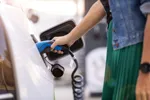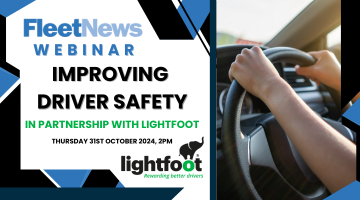TyreSafe reminds drivers of the need for extra tyre pressure when carrying heavy loads.
Drivers can reduce their chances of being stranded by the roadside or being involved in an accident by making sure their car tyres are correctly inflated.
With an increased vehicle weight from extra passengers, luggage and presents being transported, many vehicles need to have their tyres inflated to a higher pressure to stay safe.
Drivers who fail to make these checks and adjustments significantly increase their likelihood of experiencing a dangerous tyre blowout.
“During the holiday period too many motorists suffer misery from tyre related breakdowns because they haven’t made adequate checks before setting off,” explains Stuart Jackson, chairman, TyreSafe.
“Very often the cars are heavily loaded with extra passengers, luggage and presents and then head off on long, high-speed, motorway journeys.
"It’s essential when carrying extra weight that tyre pressures are checked and adjusted in line with the vehicle manufacturer’s recommendations.
"Motorists who fail to make these adjustments are much more likely to spend some of their Christmas break stranded at the roadside because of a tyre failure."
TyreSafe’s tips for checking tyre pressures
- Check your tyre pressures at least once a month or before a long journey.
- Tyre pressure should be checked against the vehicle manufacturer’s recommended level. This can be found in the vehicle handbook and on a plate which is often located inside the fuel filler flap or on the driver’s door sill.
- Check the pressure when tyres are cold (i.e. when you have travelled less than two miles).
- If you are carrying a full load of passengers or luggage or will be towing a trailer or caravan, tyre pressures should be increased in line with the vehicle manufacturer’s recommendations. Details can be found in the handbook.
- Ensure a reliable and accurate pressure gauge is used.
- Check the pressure in all four tyres not forgetting to check the spare tyre as well.
- While checking pressures, give the rest of the tyre a visual inspection. Remove any stones and other objects embedded in the tread. Look out for any bulges, lumps or cuts.
- If you are unsure on any aspect of tyre pressure or tyre condition take your vehicle to an approved fitting centre and speak to the experts.

















Login to comment
Comments
No comments have been made yet.